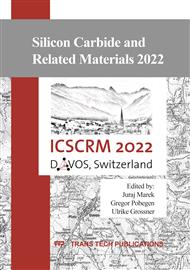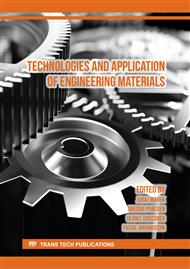p.31
p.37
p.43
p.49
p.55
p.61
p.67
p.73
p.81
Measurement and Analysis of Body Diode Stress of 3.3 kV Sic-Mosfets with Intrinsic Body Diode and Embedded SBD
Abstract:
SiC MOSFETs display reliability issues related to the quality of SiO2/SiC interface and bulk material due to the presence of near interface traps and point and extended material defects [1]. These material related issues give rise to a degradation of device reliability and ruggedness. One of them are basal plane dislocations (BPDs) introduced in the drift-layer during the epitaxial growth process which causes a s.c. bipolar degradation. Growth and movement of BPDs fueled by recombination energy has a very significant impact on conduction loss and on-resistance degradation. For 3.3 kV voltage capability, the probability of the appearance of BPDs is greater because the drift region is about three times larger compared to 1.2 kV devices [2-3]. We present measurement results and analysis of bipolar degradation in 3.3 kV MOSFETs with conventional body diode and embedded schottky barrier diode (SBD). The measurements were performed applying 50 % and 80 % of rated current with duty cycle 80 %, under total time of 100 hrs at constant case temperature of 54 °C. The 3rd-quadrant performance of both types of MOSFETs in pre-stress conditions was characterized at 25 and 150 °C with different gate biases of -10 V, 0 V, and +17 V. To evaluate the bipolar degradation, the diode conduction characteristics were measured at 25 °C after different stressing times by diode conduction the MOSFET output characteristics were measured at 25 and 54 °C before and after stressing the intrinsic body diode and embedded SBD. No VSD shift was observed in diode conduction characteristics. The results indicate that the MOSFETs were fabricated on appropriate material with a sufficiently low number basal plane dislocation (BPD). The on-state resistance with VGS = +17 V was decreased by temperature due to increased JFET resistance rather than bipolar degradation. On the other hand, the on-state resistance with VGS = +11 V was impacted by the increased temperature and VTH instability.
Info:
Periodical:
Pages:
55-59
Citation:
Online since:
June 2023
Authors:
Permissions:
Share:
Citation:



